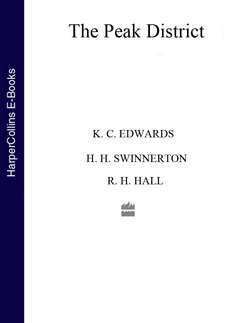Читать книгу Collins New Naturalist Library - K. Edwards C. - Страница 9
EDITORS’ PREFACE
ОглавлениеTHE SITUATION of the Peak District in the heart of England as an island of varied hill land, often of spectacular scenic charm, almost surrrounded by industrial lowland in whose cities and towns, often gloomy and grimy, live a quarter of Britain’s population, made it a natural choice for the first of our National Parks. The old geography books not infrequently referred to the Pennines as the “backbone of England” and here, at their southern end, the earth’s bony framework of older rocks appears not only at the surface, but towering to heights whose grandeur belie their modest elevation.
Nottingham is but one of the cities which adjoin the Peak District, but one from which there are natural lines of entry by some of the most charming valleys. Certainly the members of the University of Nottingham have long shown a particular interest in the area—since well before the University College became the University—and it is thus especially appropriate that Professor K. C. Edwards should head a team of his colleagues and friends to act as principal author as well as editor of this composite volume. As Professor of Geography he has spent most of his academic life at Nottingham and, as the pages of that successful journal The East Midland Geographer show clearly, he has done much to encourage the scientific study of the surrounding area, including the Peak District. In this he carries on the tradition established by the octogenarian Professor Emeritus of Geology, the author of the volume on Fossils in the New Naturalist Library, Professor H. H. Swinnerton, who now contributes two of the basic chapters in the present volume.
Four main rock types dominate the Peak District—coarse sandstones or “grits”, shales, massive limestones and, less conspicuous, the old volcanic rocks locally known as toad stones. It so happens that these rock types offer very different resistance to the forces of nature and so The Peak has become a region of sharp contrasts—from the intimate wooded dales to the windswept, boggy moorland heights. The habitats afforded are correspondingly rich and varied and so naturally are both plant and animal life and the response of man as farmer. Mineral wealth has added to the variety of man’s responses, so that in addition to its other attractions the Peak District exhibits fascinating fragments of the story of man’s occupation of the area from prehistoric times to the present.
A region of such difficult relief has long offered a challenge to man—in selecting sites for his settlements, in finding routes for his roads and railways, in utilising the varied scattered resources. Each of these aspects is taken up in turn and we are led to see clearly the competing claims on Peak District land—for farming, grazing, forestry, water supply, recreations, sport, nature conservation and others—and how the solution may lie in the careful application of the principles of multiple use within the framework of a National Park administration.
Although with the names of K. C. Edwards and H. H. Swinnerton only that of the botanist R. H. Hall appears on the title page, Professor Edwards has been able to incorporate observations by many workers in many fields, and the resulting volume is one which we are confident will have a very wide appeal. As his long association with the Ramblers’ Federation, the Youth Hostels Association and many field bodies will show, Professor Edwards believes the way to see and know The Peak is on foot. His book has thus a special appeal to the legions of ramblers who use the National Park every week-end, winter and summer alike.
THE EDITORS
